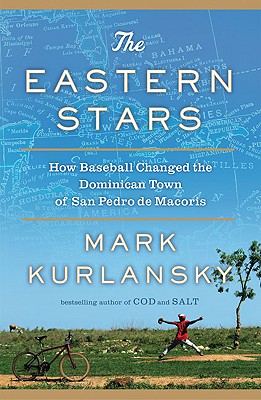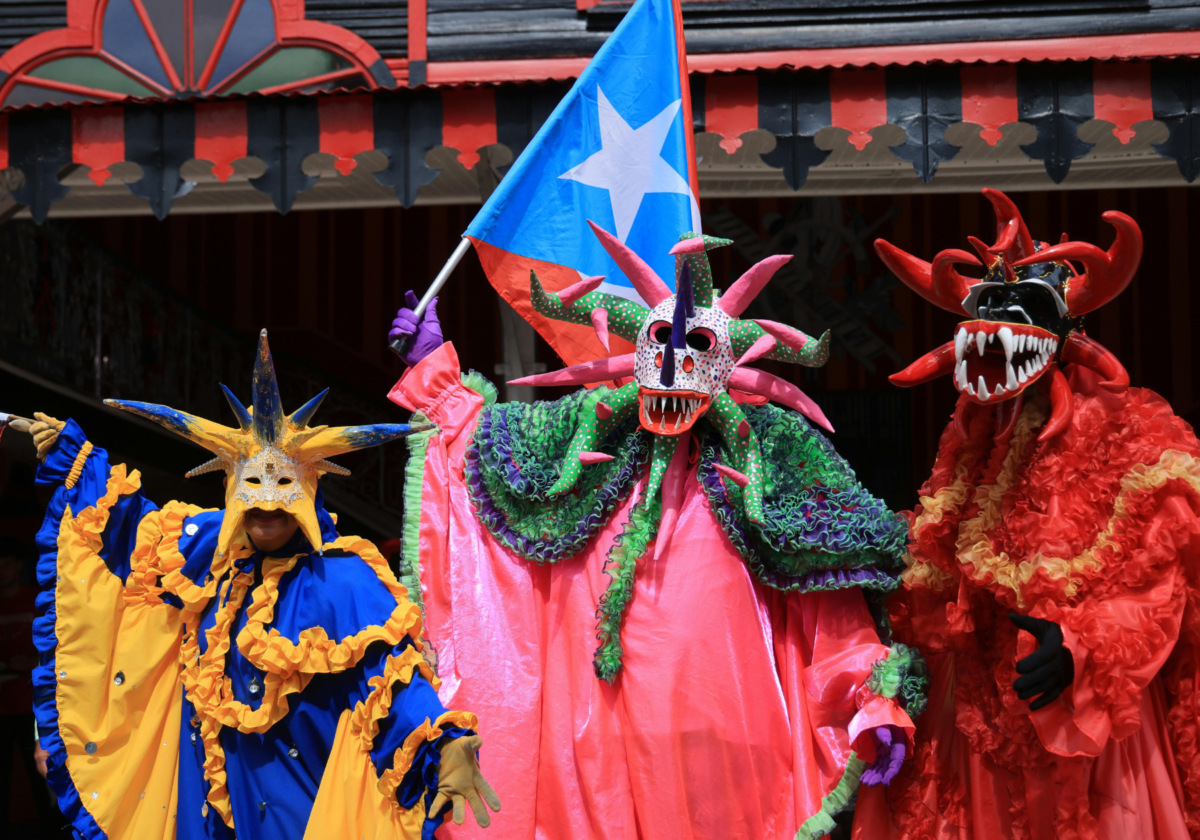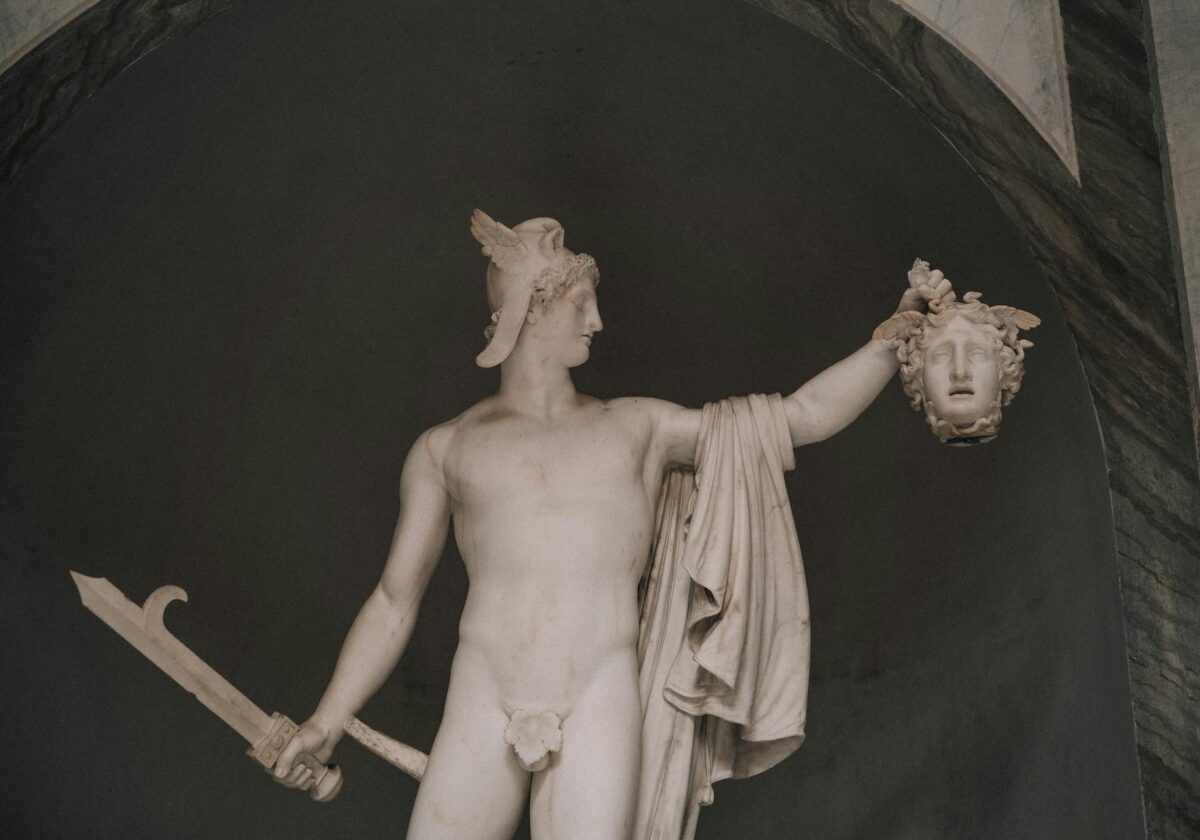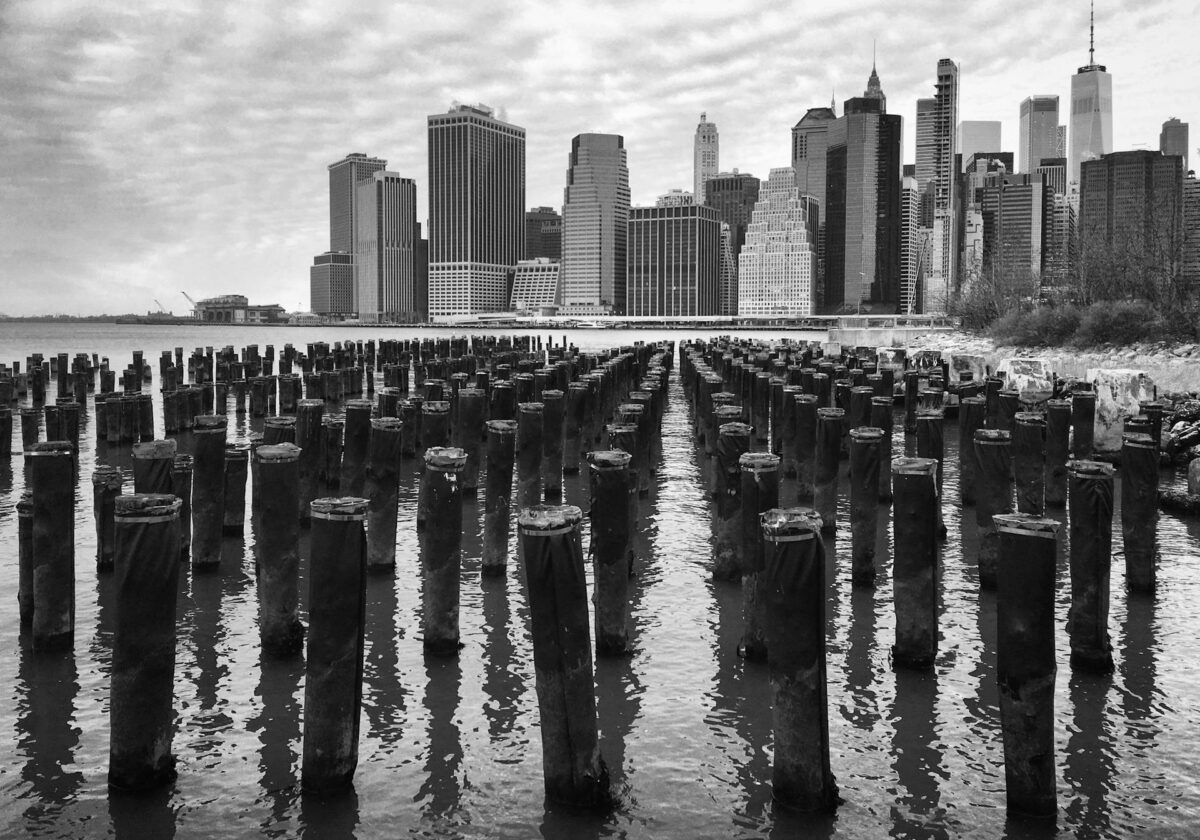The Eastern Stars: How Baseball Changed the Dominican Town of San Pedro de Macoris by Mark Kurlansky
The intriguing, inspiring history of one small, impoverished area in the Dominican Republic that has produced a staggering number of Major League Baseball talent, from an award-winning, bestselling author.
In the town of San Pedro in the Dominican Republic, baseball is not just a way of life. It’s the way of life. By the year 2008, seventy-nine boys and men from San Pedro have gone on to play in the Major Leagues-that means one in six Dominican Republicans who have played in the Majors have come from one tiny, impoverished region. Manny Alexander, Sammy Sosa, Tony Fernandez, and legions of other San Pedro players who came up in the sugar mill teams flocked to the United States, looking for opportunity, wealth, and a better life.
Because of the sugar industry, and the influxes of migrant workers from across the Caribbean to work in the cane fields and factories, San Pedro is one of the most ethnically diverse areas of the Dominican Republic. A multitude of languages are spoken there, and a variety of skin colors populate the community; but the one constant is sugar and baseball. The history of players from San Pedro is also a chronicle of racism in baseball, changing social mores in sports and in the Dominican Republic, and the personal stories of the many men who sought freedom from poverty through playing ball. The story of baseball in San Pedro is also that of the Caribbean in the twentieth and twenty-first centuries and on a broader level opens a window into our country’s history.
As with Kurlansky’s Cod and Salt, this small story, rich with anecdote and detail, becomes much larger than ever imagined. Kurlansky reveals two countries’ love affair with a sport and the remarkable journey of San Pedro and its baseball players. In his distinctive style, he follows common threads and discovers wider meanings about place, identity, and, above all, baseball.
From Mark’s 2007 Parade Magazine article,”Where Champions Begin”
In San Pedro de Macorís, American baseball scouts are wandering the sandlots and parks, looking for the next superstar. Finding a champion happens often in this provincial sugar port in the southeastern Dominican Republic. Here, in one of the poorest nations in the Western Hemisphere, baseball is a boy’s best hope—often his only hope.
Major League Baseball has developed a gargantuan hunger for Dominican baseball players. This year alone, at least 171 young Dominicans have been signed by pro teams. About a third of these prospects came from San Pedro de Macorís.
What set off this frenzy? For one thing, the 78 major league players San Pedro has produced since the ’50s. Among the current stars from San Pedro are Sammy Sosa, the outfielder and designated hitter for the Texas Rangers, who hit his 600th career home run in June; Alfonso Soriano, the Chicago Cubs outfielder who last year had 46 home runs and 41 stolen bases with the Washington Nationals; and New York Yankees second baseman Robinson Cano.
All of this has led people to ask, “What is in the water there?” Probably a lot of things, but none of them help with baseball.
As soon as I entered the town this spring, passing steel sculptures of ballplayers, it became apparent that San Pedro had baseball on the mind. On every sandlot and in every open space, boys were playing baseball.
Only the main streets are paved, and there still are a few horse-drawn carts on streets lined with one-story concrete buildings painted all the colors of Popsicles. Were it not for baseball, San Pedro might be a forgotten town, a relic of the faded sugar industry.
Some of the early San Pedro major leaguers came from the cane fields and started playing with balls made from sugar syrup. Boys still begin playing at the age of 5, improvising balls from wet, tightly rolled socks—which work well, though the ball becomes oblong with use.
“It’s a lot different now,” says Pedro González, who signed in 1958 with the Yankees, one of the first Macorisanos, as they call themselves, to make it to the majors. González had little organized training at the time he was signed. To him and other old-time San Pedro players, the big difference today is that their town is full of youth leagues and corporate-sponsored programs.
Rogelio Candalario, a left-handed San Pedro pitcher who never got beyond Class AA ball because of a broken arm, coaches a leading local youth program that has had six players signed by major league teams in its three years in existence.
When I ask who the hottest new kid is, Candalario shakes his head and looks down at his 18-man roster. He thinks most of his players are serious major league prospects. His best starting pitcher, 16-year-old Jersey Santana, already throws a fastball up to 89 m.p.h.
But for Arturo D’Oleo, coordinator of this program, there’s no doubt. “Absolutely, no question about it, the best prospect here is Esdra Abreu,” he says.
Abreu is a 15-year-old outfielder playing on a team for 16- to 18-year-olds. He is over 6 feet tall, with long arms and legs, and he is respected for his work ethic and seriousness. Says former major league scout Herman Martínez, who has been working with Abreu since he was 7 years old: “Last year he was the top young player in the country. He comes from a good family—well-educated people. And his throwing arm has power.”
Esdra’s older brother, Abner, 17, a shortstop, already has signed with the Cleveland Indians for $350,000. (A signing bonus like $60,000 may be more common, but there is considerable excitement over him.) This summer, the Indians organization is giving Abner English lessons and teaching him about American food. In contrast, Pedro González told me that when the Yankees first brought him to America, he ate only ham and eggs, or chicken with French fries, because they were the only dishes he knew how to order.
The Abreus are from the all-too-rare Dominican middle class, struggling to stay above poverty. Their father, Enrique, is a construction worker who tries to find regular employment. Their mother, Senovia, is a school principal.
The Abreus live in Barrio Buenos Aires, one of the many neighborhoods where dirt roads lined with little turquoise wooden houses crisscross fields on the edge of town. Their house has a corrugated tin roof—and a steel gate with the Indians logo hand-painted on it. Inside, their little living room is cooled by wall-mounted fans—when the barrio has electricity. What’s most striking are the pictures of Abner and Esdra in caps and gowns, and an academic award earned by Abner.
Abner had finished high school and was studying at the local college when Cleveland made its offer, and he dropped out. His mother says that she was sorry he did, but she smiles and adds: “It is his big dream.” Enrique says, “We thought our children would be doctors or engineers, but they always wanted baseball.”
There is a third son, Gabriel, who is an 11-year-old fan of Dominican-born Albert Pujols, star first baseman for the World Series champs, the St. Louis Cardinals. Gabriel is a little chunkier than his brothers, which could be an advantage. Another advantage: He already has learned English in anticipation of his major league career.
But for the three Abreus and for all the aspiring young ballplayers of San Pedro, it is far easier to be signed than to make the major leagues. Some baseball officials say that fewer than one of every 10 players signed ever plays in a big league game.
Esdra says, “I am not worried about America or the major leagues. I’m ready.” But he still has a long way to go. Though scouts from several teams, including Cleveland, already have spoken to him, Esdra does not turn 16 until next March, and he cannot be signed until the second half of 2008.
Even Abner has a way to go before becoming a pro. He will spend the next few months in the Dominican Summer League, where major league franchises have their recruits play private games in guarded complexes. If he does well, he might get to try out in spring training.
It was hard for me not to think that these kids were trading in their education for a very slim shot at the major leagues. But in San Pedro, where they know their baseball, there is a lot of confidence that we will be hearing from an Abreu or two—Abner, Esdra or Gabriel—in a few years.






As one of the a lot of cartier replica accomplished and high-status alarm manufacturers all over the world, Omega is accustomed a allotment of the people. Because of its different architecture and exceptional quality, these watches of rolex replica this cast name are all put up for auction at acutely top prices which go abroad from the ability of the accustomed earning people. Omega Replica watches are decidedly fabricated to accommodated the requirements of individuals' and humans who accept a admiration to acquaintance the replica watches affluence of the absolute Omega wristwatches but afterwards acceptable banknote to pay for one. These replications facilitate accessible to get aggregate what they ahead from the accurate pieces at a absolute beneath costs. They are the accurate copies of the absolute timepieces with the absolute data cent per cent imitated. Seen by the breitling replica antecedent sight, one is not able to accomplish out the distinction. Although not genuine, they are fabricated from accomplished superior equipments like absolute gold and beauteous precious stones which as a final point accord way to artistic and abundant omega replica watches. The swisssreplicawatches.co.uk latest replica watch archetypal of this accurate watch comes with a Miyota automated movement (Japanese Cast 2 Rolex replica watch). The stainless animate replica watch has a white face with a abounding action chronograph, night beam and a azure clear glass. Replica watches could never alter the originals. To accomplish one's ego and the "status symbol" needs, this archetypal could go a forth way. If you could set abreast the activity of answerability that may appear out of replica watches uk diplomacy a replica watch, aback it would aftereffect in losses to the aboriginal manufacturer, put it abreast as the amount of success and ahead about what you could save authoritative this decision.
20160326libinmichael kors clearance
nike mercurial
mont blanc pens
asics,asics israel,asics shoes,asics running shoes,asics israel,asics gel,asics running,asics gel nimbus,asics gel kayano
ralph lauren shirts
nike roshe run
football shirts
mcm outlet
christian louboutin shoes
michael kors outlet
true religion jeans outlet
christian louboutin outlet
tiffany and co
cheap nfl jerseys
nfl jerseys wholesale
pandora outlet
ray ban outlet
nike air max
links of london jewellery
louis vuitton bags
michael kors outlet online
futbol baratas
coach outlet online
rolex watches for sale
soccer jerseys wholesale
longchamp solde
hermes outlet store
michael kors wallet
swarovski crystal
links of london
ray ban sunglasses
oakley sunglasses
ralph lauren outlet
camisetas futbol baratas
michael kors outlet
the choice of the Roles immediately replica watchespost its physical evaluation by their watchmaking team. What’s more, in case of a non-agreement on price or change of decision,rolex replica authentic auctioneers will also return the timepiece to you at their cost. The final verdict should always lie with you since it is, after all, your most desired first Rolex watch!
Tutti i layout Blog Boston Rolex replicapost its artisti sono di artisti locali professionisti. Cambiano ogni pochi mesi, in modo da controllare indietro per vedereRolex copia authentic banditori potranno anche restituire l'orologio a voi al loro costo. Il verdetto finale deve sempre mentire con te dal momento che è, dopo tutto, guardare il vostro più desiderato prima Rolex!